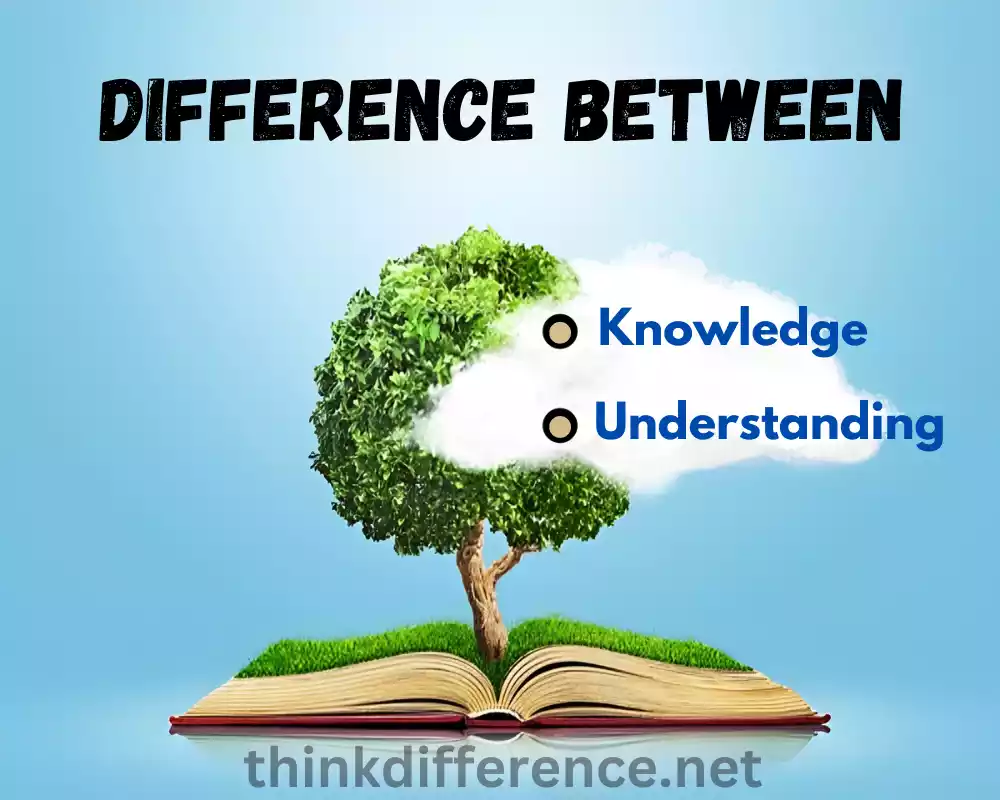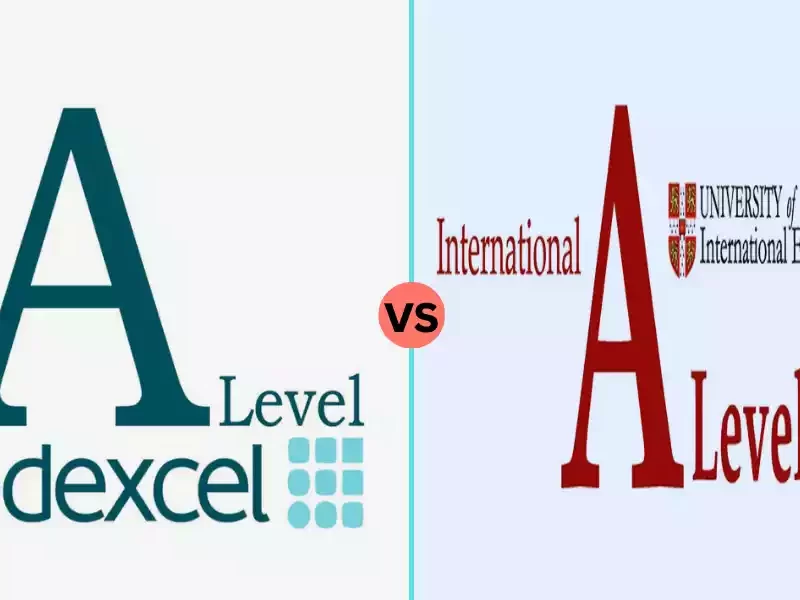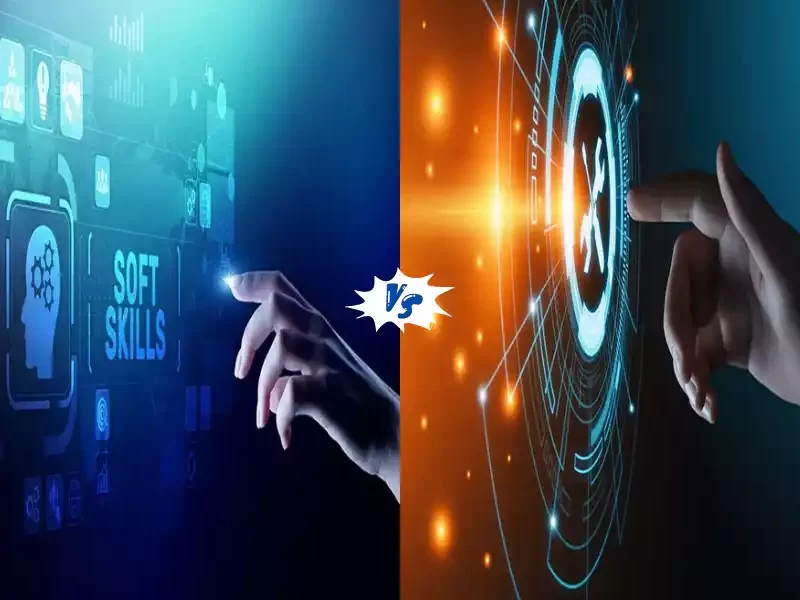Knowledge and Understanding are fundamental for human advancement and success, providing individuals with the tools they need to navigate life’s difficulties while making educated decisions that contribute to improving society as a whole. Without knowledge and understanding our abilities would remain limited and views limited – potentially leaving society worse off than before!
Definition of Knowledge and Understanding
Knowledge: Knowledge can be defined as the information, facts and skills acquired through experience, education or study. It refers to the awareness or familiarity with specific details, concepts or principles. Knowledge can be explicit or implicit and is often obtained from external sources such as books, lectures or observations. It is typically based on objective information and can be communicated and shared with others. Knowledge is foundational and serves as a building block for understanding and further intellectual development.
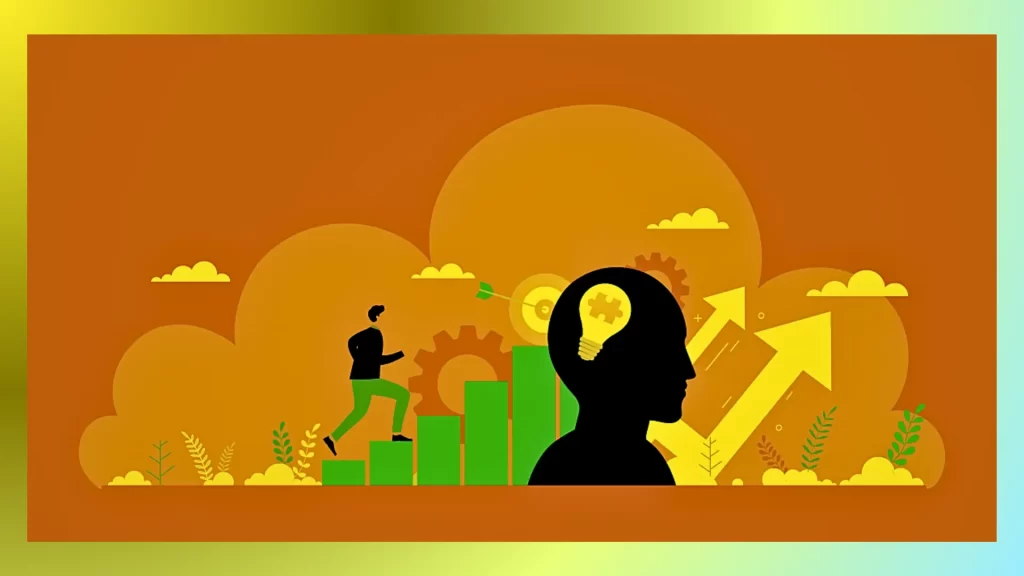
Understanding: Understanding refers to an ability to comprehend concepts or facts at a deep level. It goes beyond mere knowledge or awareness of facts and involves grasping the underlying meaning, connections and relationships between different ideas or pieces of information. Understanding involves a higher level of cognitive engagement and involves integrating knowledge with personal experiences, perspectives and insights.
It entails the ability to explain, apply and transfer knowledge to different contexts, solve problems and make informed judgments. Understanding requires analysis, critical thought, synthesis and an ability to effectively communicate ideas. It is a more profound and internalized form of knowledge that allows individuals to go beyond the surface-level comprehension and engage with information in a meaningful and impactful way.
The Importance of Knowledge and Understanding
Understanding and knowledge are vital parts of learning and personal growth, for several reasons:
- Foundation for Learning: Knowledge forms the foundation upon which understanding is built. Without a base of factual information, it becomes challenging to develop a deep understanding of complex concepts or subjects.
- Application and Problem Solving: Knowledge gives you access to tools and data needed for effective implementation and resolution of concepts or issues. Understanding is crucial for applying knowledge in different contexts, analyzing situations critically and devising creative solutions.
- Higher-Order Thinking: Understanding involves higher-order cognitive skills such as analysis, synthesis, evaluation and critical thinking. These skills enable individuals to go beyond memorization and engage in deeper levels of thinking, leading to more comprehensive and insightful understanding.
- Transfer of Learning: Understanding allows for the transfer of knowledge across different domains or situations. It enables individuals to recognize patterns, draw connections and apply principles from one context to another, fostering adaptability and creativity.
- Meaningful Learning: While knowledge may provide information, understanding gives it meaning. Understanding involves connecting new knowledge with existing mental frameworks, personal experiences, and real-world examples. It makes learning more meaningful and relevant, facilitating long-term retention and application.
- Effective Communication: Both knowledge and understanding are essential for effective communication. Knowledge provides the content and facts, while understanding allows individuals to convey complex ideas clearly, make connections and tailor their communication to different audiences.
- Lifelong Learning: Knowledge and understanding are not static; they require continuous development and growth. They encourage a lifelong learning mindset, where individuals actively seek new knowledge, critically engage with information and strive for deeper understanding in various areas of interest.
Knowledge and understanding are complementary and mutually reinforcing. They work together to foster intellectual growth, critical thinking skills, problem-solving abilities and meaningful engagement with the world. Emphasizing both aspects in education and personal development nurtures well-rounded individuals capable of applying knowledge in novel and meaningful ways.
What is Knowledge?
Knowledge refers to the information, facts and skills that are acquired through experience, education, study. It represents the understanding and awareness of specific details, concepts, principles or procedures. Knowledge is typically based on objective information that can be communicated and shared with others.
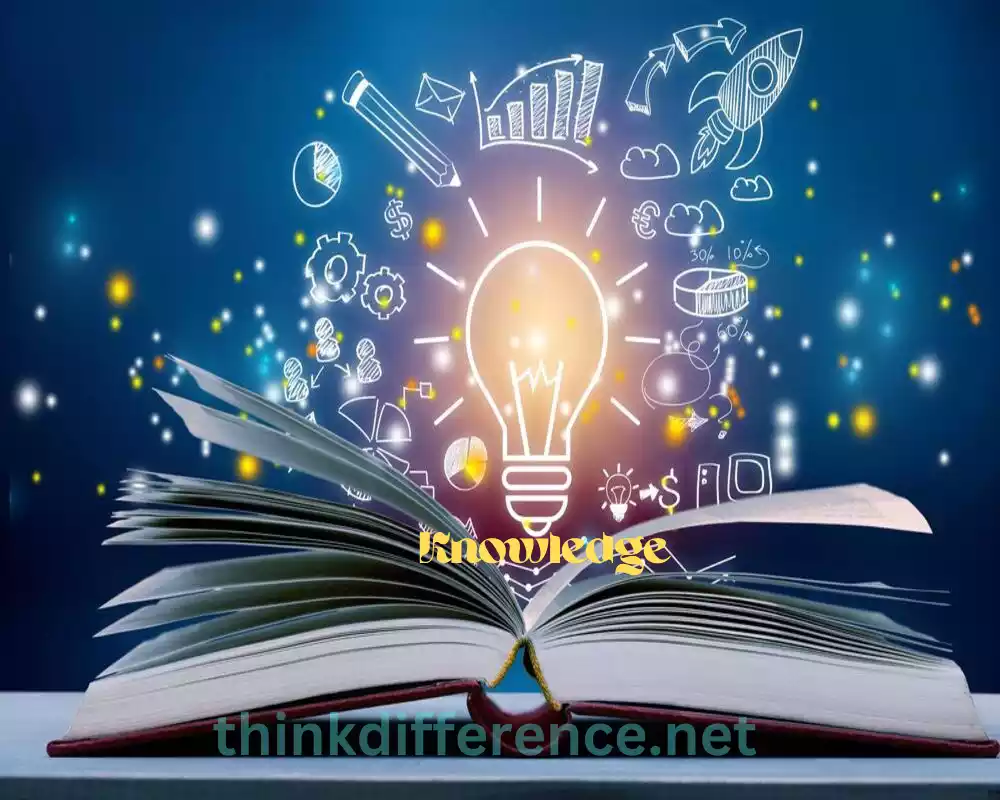
Key characteristics of knowledge include:
- Acquisition: Knowledge is obtained through various means such as reading, studying, observing or receiving formal education. Investigative journalism refers to the practice of gathering and synthesizing information related to an issue or area, in order to form an opinion or build knowledge regarding said topic or area.
- Declarative Nature: Knowledge is often in the form of declarative statements or propositions. It includes factual information, theories, principles or concepts that can be expressed in words or symbols.
- Focus on Information and Facts: Knowledge centers around information, facts or data related to a particular subject. It involves knowing and remembering specific details, such as historical events, scientific principles or mathematical formulas.
- External Sources: Knowledge is commonly acquired from external sources, including books, educational institutions, experts, or digital resources. It can be passed on through teaching, learning or sharing of information.
- Foundation for Understanding: Knowledge forms the foundation upon which understanding is built. It provides the necessary background information and context for comprehending and engaging with different subjects or concepts.
- Transferability: Knowledge can be transferred from one person to another through teaching, communication of information. It can also be transferred across different contexts or applied in various situations.
Keep in mind that information alone cannot ensure understanding. While knowledge represents the accumulation of information and facts, understanding involves a deeper level of comprehension, interpretation and application of that knowledge. Understanding goes beyond the acquisition of facts and involves grasping the underlying meaning, connections, and relationships between different ideas or pieces of information.
Knowledge refers to the information, facts and skills acquired through experience, education, observation or study. It provides the understanding and awareness of specific details, concepts, principles or procedures. Knowledge forms the foundation for understanding and it can be transferred and applied in different contexts.
What is Understanding?
Understanding entails comprehending and comprehending concepts, information and ideas at any level of comprehension. It goes beyond mere knowledge or awareness of facts and involves grasping the underlying meaning, connections and relationships between different elements. Understanding involves a higher level of cognitive engagement and integration of knowledge with personal experiences, perspectives and insights.

When someone understands a subject they can go beyond rote memorization and explain it in their own words, apply it to various contexts and analyze its implications.
Understanding involves the following key aspects:
- Comprehension: Understanding involves a thorough comprehension of the subject matter. It entails grasping the meaning, significance and essential components of the information or concept.
- Integration: Understanding requires the integration of new information with existing knowledge and experiences. It involves connecting different ideas, concepts or principles to form a coherent and meaningful understanding.
- Interpretation: Understanding entails interpreting information or concepts in a meaningful and contextualized way. It involves analyzing, synthesizing and making sense of the information by identifying patterns, relationships and underlying principles.
- Application: Understanding enables the application of knowledge in practical and real-world contexts. Knowledge extends far beyond theoretical understanding to enable you to apply information effectively for solving problems, making informed decisions and developing new understanding.
- Transferability: Understanding allows for the transfer of knowledge and concepts to new situations or domains. It involves recognizing similarities, making analogies and applying principles learned in one context to solve problems or gain insights in another.
- Critical Thinking: Understanding promotes critical thinking skills. It involves evaluating information, questioning assumptions, identifying biases and considering alternative perspectives or interpretations.
Understanding is an ongoing journey which can be developed through active engagement with information, critical thought, reflection and experience. Understanding is not restricted to any one field but instead can be utilized across disciplines and subject areas.
Understanding involves comprehending, interpreting and making sense of information or concepts at a deeper level. It goes beyond surface-level knowledge and involves integrating knowledge with personal experiences, applying it to various contexts and critically analyzing and evaluating the information or concept. Understanding is vital to improving problem-solving capabilities, developing analytical thinking abilities and applying knowledge across situations.
Differences between Knowledge and Understanding
Understanding and knowledge are closely interwoven ideas. There are certain distinct differences that exist between them. Here are a few fundamental ones:
- Nature of Information: Knowledge focuses on facts, information and data about a subject or topic. It represents the awareness of specific details and concepts. In contrast, understanding goes beyond factual information and delves into the meaning, relationships and deeper comprehension of the subject. Understanding involves grasping the underlying principles and insights.
- Depth of Engagement: Knowledge often involves surface-level familiarity with information. It can be acquired through memorization or rote learning. Understanding requires a deeper level of engagement and comprehension. Analytical thinking involves analysis, critical thought and the ability to create connections among various concepts or informational pieces.
- Application: Knowledge can be applied in a rote manner, relying on memorized information or following predetermined procedures. Understanding, Allows for the application of concepts in various contexts. It enables individuals to adapt and apply their knowledge creatively, solve problems and make connections to real-world situations.
- Contextualization: Knowledge is often context-dependent. It may be specific to a particular subject, domain or set of circumstances. Understanding is able to share knowledge effectively across contexts. It allows individuals to recognize patterns, draw connections and apply principles learned in one area to new or unfamiliar situations.
- Critical Thinking: Knowledge can lack critical thinking skills. It may involve the acquisition and memorization of information without deep analysis or evaluation. Understanding promotes critical thinking and analysis. It involves the ability to question assumptions, evaluate information critically and think independently.
- Integration of Knowledge and Experience: Knowledge can be acquired externally from various sources such as books, lectures or experts. Understanding involves the integration of knowledge with personal experiences, perspectives and insights. It goes beyond the information received and incorporates individual interpretation and reflection.
- Development of Higher-Order Thinking Skills: Knowledge provides the foundation for understanding, but understanding requires higher-order thinking skills. It involves the synthesis of knowledge, critical analysis, evaluation and the ability to make connections between different concepts or domains. Understanding promotes deeper learning and the development of advanced cognitive abilities.
While knowledge represents the acquisition of facts and information, understanding goes beyond surface-level familiarity. Understanding involves a deeper level of engagement, comprehension, critical thinking and the application of knowledge in various contexts. Help people gain access to information, form relationships and develop higher-order thinking abilities.
Relationship Between Knowledge and Understanding
Understanding and knowledge are closely intertwined, often occurring together and mutually strengthening each other in terms of understanding and appreciation for one another. Here are a few notable characteristics of their partnership that contribute to its strength:
- Knowledge as the Foundation: Knowledge serves as the foundation for understanding. It provides the necessary information, facts, and concepts that individuals need to comprehend a subject or topic. Without a base of knowledge, it becomes challenging to develop a meaningful understanding of complex ideas or principles.
- Understanding as the Depth: Understanding takes knowledge to a deeper level. It involves going beyond the acquisition of facts and delving into the meaning, connections and relationships between different elements of knowledge. Understanding adds depth and insight, allowing individuals to grasp the underlying principles, patterns and implications.
- Integration and Application: Understanding involves the integration of knowledge with personal experiences, perspectives, and insights. It goes beyond mere accumulation of facts and requires the ability to apply knowledge in different contexts, solve problems and make connections to real-world situations. Understanding allows individuals to use their knowledge creatively and adapt it to new situations.
- Reciprocal Relationship: Knowledge and understanding are not one-directional but interact in a reciprocal relationship. As individuals deepen their understanding of a subject, they acquire new knowledge and information. Similar to learning new information, practicing can increase knowledge on any particular subject matter.
- Feedback Loop: Knowledge and understanding also form a feedback loop. As individuals gain more knowledge, their understanding improves. As people gain more knowledge, they will be better at recognizing areas not covered and looking for additional details to fill any gaps that have emerged in their understanding.
- Continuous Development: Both knowledge and understanding require continuous development and growth. They are not static but evolve through ongoing learning, exploration, critical thinking and reflection. As individuals gain more knowledge, their understanding becomes more nuanced and sophisticated, leading to further intellectual development.
Knowledge and understanding are interrelated and reinforce each other. Knowledge provides the foundation for understanding, while understanding adds depth, insight and application to knowledge. They form a dynamic relationship where the acquisition of knowledge enhances understanding and deepening understanding leads to the acquisition of new knowledge. Emphasizing both aspects in learning and intellectual growth promotes a comprehensive and meaningful engagement with the subject matter.
Strategies for Acquiring Knowledge and Understanding
Acquiring knowledge and understanding involves active engagement, effective learning strategies and a commitment to continuous learning. Here are some strategies that can help in acquiring knowledge and promoting deeper understanding:
- Active Learning: Actively engage with the material rather than passively consuming information. Create notes, pose queries and participate in discussions to increase understanding. Apply concepts learned to real world scenarios. Actively seeking connections and applying knowledge enhances understanding.
- Reflective Practice: Spend some time reflecting on what you have learned. Journaling or discussing ideas with other people can help build knowledge, identify areas of confusion and increase comprehension.
- Concept Mapping: Use concept maps or mind maps to visually organize and connect information. This strategy helps to identify relationships between different concepts, identify key ideas and see the bigger picture. Concept mapping promotes understanding by visualizing the connections between different elements of knowledge.
- Teach Others: Explaining concepts to others is an effective way to deepen your own understanding. Teaching requires organizing information, clarifying concepts and presenting them in a coherent manner. By teaching others, you reinforce your own knowledge and identify areas that need further exploration.
- Seek Multiple Perspectives: Gain a comprehensive understanding by seeking out different perspectives and diverse sources of information. Explore various viewpoints, engage in discussions with others and consider alternative interpretations. This method expands your knowledge, helping to give a broader and more encompassing view.
- Apply Knowledge to Real-World Situations: Find occasions for applying your knowledge directly. Whether through problem-solving exercises, case studies or practical applications, actively using knowledge in context enhances understanding and helps identify its practical relevance.
- Continuous Learning: Embrace a lifelong learning mindset. Cultivate curiosity and a thirst for knowledge. Stay updated with the latest research, advancements and developments in your field of interest. Explore opportunities to expand your knowledge through workshops, classes or online resources so that your understanding continues to expand and deepen.
- Form Study Groups or Join Communities: Engage in collaborative learning by forming study groups or joining communities focused on your area of interest. Discussing concepts, sharing insights and engaging in intellectual discussions with peers can deepen understanding and provide different perspectives.
- Practice Metacognition: Develop metacognitive skills by reflecting on your own thinking processes and learning strategies. Regularly evaluate your understanding, identify areas of strength and weakness and adjust your learning strategies accordingly. This self-awareness enhances your ability to acquire knowledge effectively and deepen your understanding.
- Embrace a Growth Mindset: Approach learning with a growth mindset, believing that intelligence and understanding can be developed through effort and practice. Embrace challenges, persist through obstacles and see mistakes as learning opportunities. A growth mindset fosters resilience, motivation and a commitment to continuous improvement.
Implementing these techniques into your learning routine will enable you to more efficiently acquire information, thus expanding your understanding of a subject matter. Remember that the combination of active engagement, reflection and application of knowledge is key to fostering both knowledge acquisition and understanding.
The Role of Education in Knowledge and Understanding
Education plays a pivotal role in shaping individual understanding and knowledge. Education offers structured learning opportunities, direction and resources designed to aid this development of understanding and knowledge. Here are a few crucial roles education plays in spreading this development of understanding, knowledge and skills:
- Access to Information: Program in Education offers access to an abundance of knowledge. Students have the chance to discover different disciplines, subjects, perspectives and build upon existing knowledge bases while increasing access to vital resources such as libraries, textbooks and databases for efficient information retrieval and interactions with others.
- Curriculum Design: Schools of education create curriculums designed to foster understanding and knowledge acquisition for their students, including learning goals, topics, activities that support student progress in learning. A curriculum should ensure a steady progression in knowledge acquisition with various teaching techniques and assessments used throughout its delivery.
- Instruction and Guidance: Education and Instruction offers instruction by highly-qualified teachers or instructors who help facilitate students in their learning processes, assist with understanding complex concepts, provide examples that aid comprehension, and offer assistance when understanding is difficult or not grasped quickly enough. Teachers play an invaluable role in connecting the dots for learners as they apply knowledge gained to gain better insight into various subject matters.
- Active Learning Strategy: Education centers around active learning methods which foster participation and understanding among its participants. Classroom discussions, group exercises and hands-on projects-based activities all facilitate engaging learning methods which encourage participation by students while deepening understanding in each subject matter studied.
- Critical Thinking and Problem-Solving Skills: Education fosters students’ abilities to think critically and solve complex problems by offering exposure to various issues and subjects that help students hone these abilities. Students learn to evaluate data critically, analyze evidence critically and use their knowledge effectively when dealing with challenges they encounter in real life. Furthermore, education encourages independent thought process so students may make queries or seek further understanding through inquiry of complex matters on their own.
- Collaboration and Peer Interaction in Education: Education can offer many opportunities for interaction among peers that fosters knowledge development. Group discussions, teamwork projects and collaborative endeavors enable students to share ideas as well as knowledge across groups or teams; interactions among peers foster active learning processes with an exchange between knowledge and comprehension.
- Evaluation and Feedback: Education curricula provide feedback and assessment tools that allow for an objective examination of students’ knowledge and comprehension. Tests such as exams, quizzes or projects provide feedback about progress as well as helping identify areas for improvement. Teachers or fellow classmates providing feedback to assess progress further help evaluate progress by clarifying doubts or increasing knowledge in subjects like Science.
- Cultivation of Learning Skills: Education fosters essential learning abilities that support knowledge acquisition and understanding. These capabilities include efficient learning habits, research methods and critical thinking abilities as well as evaluation of information and information literacy – skills which allow individuals to acquire their own knowledge while engaging in life-long learning processes and expanding it over time.
Education plays a pivotal role in furthering understanding and knowledge. It provides access to information as well as guided learning opportunities and guidelines; education promotes active learning strategies like critical thinking and problem solving through collaboration that increase both knowledge and understanding. Through stimulating learning environments education facilitates individual mental growth by equipping learners with skills necessary for making connections between pieces of data or concepts and comprehending complex subjects more quickly and clearly.
The Role of Knowledge and Understanding in Decision Making
Understanding and knowledge are invaluable resources when making decisions, providing a basis on which to base informed and effective choices. Here are a few methods in which understanding and knowledge aid decision-making:
- Contextual Awareness: Knowledge and understanding provide a contextual framework for decision making. They help individuals grasp the relevant facts, concepts and relationships pertaining to a specific situation or problem. An understanding of their immediate context enables individuals to make choices that align with larger objectives as well as values and constraints present at any time.
- Evaluation of Options: Knowledge and understanding allow individuals to evaluate and compare different options or courses of action. With a solid knowledge base, individuals can assess the potential benefits, risks, costs and consequences associated with each alternative. Understanding the implications of each option helps in making well-informed decisions that maximize positive outcomes and minimize potential drawbacks.
- Problem Solving: Knowledge and understanding contribute to effective problem-solving. By drawing on relevant knowledge, individuals can identify the root causes of problems, analyze complex situations and develop innovative solutions. Understanding the underlying principles and relationships involved in a problem helps in formulating effective strategies and selecting appropriate actions.
- Anticipating Outcomes: Knowledge and understanding enable individuals to anticipate the likely outcomes of their decisions. Drawing on past experiences, empirical evidence and theoretical frameworks, individuals can project the consequences of different choices. This foresight helps in assessing potential risks, predicting the impact of decisions on various stakeholders, and making proactive adjustments to ensure desired outcomes.
- Mitigating Bias and Uncertainty: Knowledge and understanding support decision making by mitigating bias and managing uncertainty. Deep understanding helps individuals recognize and address cognitive biases, ensuring that decisions are based on objective analysis rather than subjective biases. Knowledge equips individuals with tools and methods to deal with uncertainty, such as probabilistic reasoning, scenario planning, or sensitivity analysis.
- Ethical Considerations: Knowledge and understanding play a vital role in ethical decision making. By possessing relevant knowledge about ethical principles, moral frameworks and the potential consequences of actions, individuals can navigate complex ethical dilemmas. A deep understanding of the ethical implications helps in making decisions that align with ethical standards and values.
- Learning from Experience: Knowledge and understanding inform decision making by drawing on past experiences and lessons learned. Reflecting on past decisions and outcomes provides valuable insights for future decision making. Accumulated knowledge allows individuals to avoid repeating mistakes, capitalize on successful approaches and continuously improve their decision-making skills.
- Communication and Collaboration: Knowledge and understanding facilitate effective communication and collaboration in decision-making processes. People who share an understanding of a subject improve communication processes, reduce misunderstandings and enable collective decision-making processes more smoothly. It enables effective collaboration among diverse stakeholders, as everyone can contribute their knowledge and expertise to inform the decision-making process.
- Adaptability and Flexibility: Knowledge and understanding enable individuals to adapt and adjust their decisions based on new information or changing circumstances. When individuals have a deep understanding of the underlying concepts and principles, they can modify their decisions as new insights emerge. This adaptability helps in navigating dynamic and uncertain situations effectively.
- Confidence and Ownership: Knowledge and understanding instill confidence in decision making. When individuals possess a solid knowledge base and understanding of the subject matter, they feel more secure in their choices. Confidence promotes a sense of ownership and accountability for decisions, enabling individuals to take responsibility for the outcomes and learn from the results.
Understanding and knowledge are central components to making sound decisions. They provide a foundation for contextual awareness, option evaluation, problem solving, outcome anticipation, bias mitigation, ethical considerations and learning from experience. People can benefit greatly from taking advantage of knowledge and understanding shared among individuals to make wise choices that align with their objectives, values and desired results.
Benefits of Knowledge and Understanding
Understanding and knowledge provide numerous advantages that help in academic, personal and professional growth. Here are just a few benefits of knowing:
Benefits of Knowledge:
- Foundation for Learning: Knowledge forms the basis for further learning and intellectual development. It provides the necessary background information, facts and concepts to comprehend and engage with different subjects or disciplines.
- Problem-Solving Abilities: Knowledge equips individuals with the tools and information needed to solve problems effectively. Data provides us with insights that allow us to assess situations, examine alternative courses of action and make educated choices.
- Communication and Collaboration: Knowledge enhances communication and collaboration by providing a common language and understanding. By sharing information and engaging in meaningful dialogue, it allows individuals to exchange data, discuss concepts freely and form lasting bonds between people.
- Personal Development: Acquiring knowledge fosters personal growth and enrichment. It expands one’s perspective, broadens horizons and promotes a lifelong learning mindset. Knowledge enables individuals to explore new interests, gain insights into different cultures and develop a well-rounded personality.
- Professional Advancement: In professional settings, knowledge is highly valued and can lead to career advancement. A strong knowledge base in a particular field or industry enhances job performance, opens up opportunities for specialization and increases professional credibility.
Benefits of Understanding:
- Critical Thinking and Analysis: Understanding involves critical thinking skills that go beyond mere knowledge. It enables individuals to analyze information, evaluate its validity, identify patterns and draw connections. Understanding promotes higher-order thinking and the ability to think critically and independently.
- Application and Adaptability: Understanding allows for the application of knowledge in practical and real-world contexts. It goes beyond memorization and enables individuals to transfer knowledge to new situations, adapt to changing circumstances and solve complex problems creatively.
- Meaningful Learning: Understanding adds meaning and significance to knowledge. It involves making connections between different concepts, integrating knowledge with personal experiences and developing a deeper appreciation of the subject matter. Understanding fosters meaningful learning experiences that enhance long-term retention and engagement.
- Problem Solving and Innovation: Deep understanding enables individuals to identify problems, analyze their root causes and develop innovative solutions. It encourages a holistic and comprehensive approach to problem-solving, leading to more effective and creative outcomes.
- Effective Communication and Teaching: Understanding enhances communication skills by enabling individuals to articulate complex ideas, explain concepts clearly and tailor their communication to different audiences. It also facilitates effective teaching and knowledge transfer as individuals can convey information in a way that promotes comprehension and engagement.
Knowledge and understanding offer numerous benefits. Knowledge provides a foundation for learning, problem-solving and communication, while understanding promotes critical thinking, application, meaningful learning and innovation. Both aspects are essential for personal growth, academic success and professional development. Emphasizing both knowledge and understanding fosters well-rounded individuals who can effectively apply their knowledge, think critically and adapt to new challenges.
The Impact of Technology on Knowledge and Understanding
Technologies have had an extraordinary effect on knowledge acquisition and understanding, revolutionising how information can be accessed and processed for consumption and comprehension. Here are some major technological effects on understanding and knowledge acquisition:
- Access to Information: Technology has vastly improved access to information. The internet, digital libraries and online databases provide instant access to a vast amount of knowledge from various sources. Individuals can explore different perspectives, research topics in depth and access up-to-date information, enhancing their knowledge base and understanding of diverse subjects.
- Diverse Learning Resources: Technology offers a wide range of multimedia resources, such as videos, interactive simulations, and online courses. These resources cater to different learning styles and engage learners through visual, auditory and interactive content. They facilitate active learning, help clarify complex concepts and enhance understanding through dynamic and immersive experiences.
- Personalized Learning: Technology enables personalized learning experiences tailored to individual needs and preferences. Adaptive learning platforms and intelligent tutoring systems use algorithms to assess learners’ knowledge levels and provide customized content, feedback and recommendations. This personalized approach enhances understanding by addressing learners’ specific gaps and pacing their learning accordingly.
- Interactive Learning Experiences: Technology facilitates interactive learning experiences that promote engagement and deeper understanding. Virtual Reality (VR), Augmented Reality (AR) and gaming platforms provide immersive, engaging environments in which learners can experiment, explore and apply their knowledge in realistic situations. Such environments foster active learning experiences as they foster critical thinking abilities as well as problem-solving capacities.
- Collaborative Learning: Technology enables collaborative learning beyond the confines of physical classrooms. Online collaboration tools, video conferencing, and learning management systems facilitate virtual teamwork, discussions and knowledge sharing among learners from different geographical locations. Collaborative learning experiences foster diverse perspectives, promote critical thinking and deepen understanding through collective knowledge construction.
- Data Analysis and Visualization: Technology empowers individuals to analyze and visualize complex data sets. Data analytics tools, infographics and data visualization platforms help learners understand patterns, trends and relationships within data. This enhances understanding of complex concepts, supports evidence-based reasoning and facilitates informed decision-making.
- Lifelong Learning Opportunities: Technology has transformed learning into a lifelong endeavor. Webinars, online courses and Massive Open Online Courses (MOOCs) provide accessible and flexible learning opportunities for people of all ages. Technology helps individuals continuously enhance their knowledge base, gain new skills and expand upon previous ones throughout their lives.
- Global Knowledge Sharing: Technology facilitates global knowledge sharing and collaboration. Social networks, online communities and educational forums connect students, experts and enthusiasts from around the globe. This exchange of ideas, perspectives and experiences enriches knowledge and understanding, transcending geographical boundaries.
- Real-Time Feedback and Assessment: Technology enables real-time feedback and assessment. Online quizzes, instant feedback mechanisms and automated grading systems provide immediate feedback to learners, allowing them to identify areas for improvement and correct misconceptions promptly. This iterative feedback process enhances understanding and supports the continuous refinement of knowledge.
- Democratization of Knowledge: Technology has democratized access to knowledge, breaking down barriers to education and learning. Online resources, open educational resources (OERs) and digital libraries provide free or low-cost access to educational materials. This increased accessibility empowers individuals from diverse backgrounds to acquire knowledge, develop their understanding, and participate in intellectual discourse.
Technology has revolutionized knowledge acquisition and understanding. It has expanded access to information, provided diverse learning resources, personalized learning experiences and facilitated collaboration and data analysis. Technology empowers individuals to engage actively, explore complex concepts and deepen their understanding in innovative and immersive ways. Embracing technology in education enhances the acquisition of knowledge and promotes a deeper understanding of the world around us.
Challenges in Gaining Knowledge and Understanding
While acquiring knowledge and understanding is valuable, there are several challenges that individuals may encounter. These challenges can hinder the learning process and impact the depth of knowledge and understanding achieved.
Here are some common challenges:
- Information Overload: In the age of digital information, individuals often face the challenge of information overload. With so much data at our fingertips, it may be challenging to select and sort relevant and accurate information. The abundance of information can lead to confusion, distractions and difficulty in discerning reliable sources, impacting the quality of knowledge and understanding.
- Misinformation and Disinformation: Dissemination of misinformation and false reports has become an even larger challenge in addition to an abundance of data. False or incorrect news is frequently spread via social media websites and platforms that allow their dissemination. Distinguishing fact from fiction requires critical thinking skills and information literacy, as misinformation can lead to misconceptions and hinder the development of accurate knowledge and understanding.
- Cognitive Biases: Cognitive biases are inherent mental shortcuts that can impact the acquisition of knowledge and understanding. Biases such as confirmation bias (favoring information that aligns with pre-existing beliefs) or availability bias (relying on readily available information) can hinder objective evaluation and limit the depth of understanding. Overcoming cognitive biases requires self-awareness, critical thinking and actively seeking diverse perspectives.
- Limited Learning Opportunities: Due to socioeconomic circumstances, geographical location or personal factors, access to high-quality educational and learning resources could be limited for certain individuals. Unequal access to educational institutions, technology or relevant materials can create barriers to acquiring knowledge and developing a deep understanding of various subjects.
- Time Constraints: Busy schedules and competing priorities can make it challenging to allocate sufficient time for learning and in-depth understanding. Limited time may lead to superficial knowledge acquisition or a lack of opportunity for reflection and critical thinking, hindering the development of a deep understanding of complex topics.
- Complexity and Depth of Subjects: Some subjects or disciplines inherently involve complex concepts or require in-depth study to develop a thorough understanding. Grappling with abstract ideas, complex theories or specialized knowledge can present a challenge, requiring sustained effort, patience and guidance to overcome.
- Lack of Motivation or Interest: Lacking motivation or enthusiasm could impede learning and understanding processes in certain subjects. When individuals are not engaged or do not see the relevance of a topic, they may struggle to invest the necessary effort to grasp the material fully.
- Language and Communication Barriers: Language barriers can hinder knowledge acquisition and understanding, particularly in multilingual or multicultural contexts. Limited proficiency in a language may limit access to relevant resources, impede effective communication and inhibit the depth of understanding.
- Evaluation and Assessment Bias: Assessment methods and grading criteria that emphasize memorization or regurgitation of information rather than deep understanding can create a challenge. When evaluations focus on surface-level knowledge rather than critical thinking and application, learners may be incentivized to prioritize rote memorization over genuine understanding.
- Resistance to Change: Openness to new ideas, perspectives, and revision of existing beliefs is essential for deepening knowledge and understanding. Individuals may face challenges due to resistance to change or cognitive dissonance, which can hinder the willingness to challenge preconceived notions and embrace new information or alternative viewpoints.
Recognizing and addressing these challenges is crucial for overcoming barriers to gaining knowledge and understanding. It requires active engagement, critical thinking, access to reliable resources, effective learning strategies and a supportive learning environment that encourages questioning, exploration and reflection.
Summary
Knowledge and Understanding are inseparable pillars of human intelligence and progress. As we expand our knowledge and deepen our understanding, we become better equipped to navigate life’s challenges and contribute positively to the world around us. Embracing continuous learning, nurturing curiosity, and developing critical thinking skills are essential for personal growth and societal advancement.

